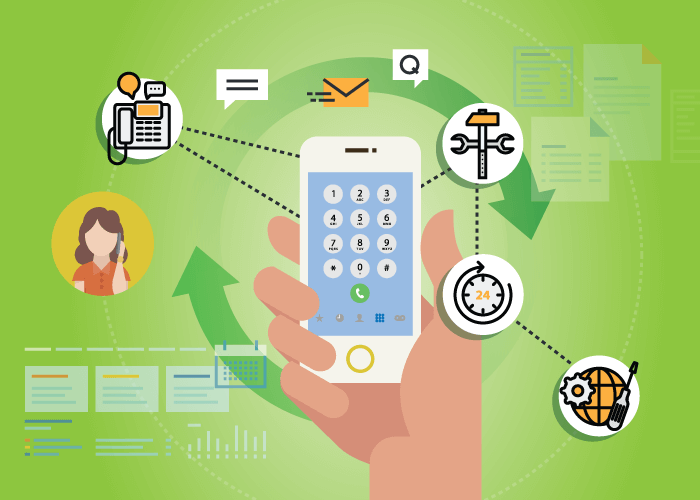As a team leader, one of your most important roles is to keep your team educated. This means ongoing training so that your personnel can keep up with the latest products, standards, and practices related to your business. In order to keep educating them, you have to maintain vigilant attention to your company’s vision as well as the goals and deadlines of the project at hand. It is also important to maintain your own motivation; only when you participate wholeheartedly in a project will your team be motivated to be there alongside you. There are a number of advantages to ongoing training; here is a look at some of the ways it pays to keep your team continuously trained.
Boosting Productivity
Training and development is an excellent way to increase productivity and retention. Don’t give in to the temptation of cutting back on outside training such as workshops and conferences for your employees because this can actually cause you to lose out in the long run. Studies show that employees who are well-trained are much more willing and capable of assuming a higher level of control over their assignments and they need less supervision when on task. Not only do they offer better customer service, but they also enjoy their work more.
Maintaining Communication
There is no such thing as too much communication, and this should be an integral part of all employee training. Make sure that you and all members of your team are on the same page all the way through each project. Employees need to be updated on the progress of the project on a regular basis. Though regular face-to-face meetings are very important, it’s not always convenient to call everyone together as this can impede progress, particularly if your team members do not share the same geographic location. Other good ways to keep your employees on top of the project’s ongoing status is through email, memos, conference calls, and video conferencing. Let your team know how important communication is for meeting long-term training goals and also addressing any challenges that are being faced, and encourage them to make suggestions.
Rewarding Efficient Performance
Another key factor to maintaining adequate training and motivation to learn is to reward individual and team performance. Recognition of achievement is a great way to provide positive reinforcement and encourage excellence among your employees. Use your company newsletter to announce specific achievements and goals that have been met. Take the time to make personal phone calls to commend high achieving workers. In recognition of team efforts, take your employees out for lunch, post-performance charts in the workplace or on your company website. Make these acts a regular part of your corporate motivation strategy.
Offering Your Team a Challenge
By setting your team-challenging goals, you are offering a stimulating way to learn new skills or to brush up on old ones. Your employees will work hard to meet new challenges and to achieve excellence. Make sure that the training goals are realistic and can be attained within a reasonable amount of time. Don’t forget to equip your team with the tools to succeed. They will soon lose motivation if they lack the tools required for the job. This doesn’t only include the necessary equipment, but also internal support, materials, and regular communication.
Keep Poor Performance in Check
Poor performance can lead to a downward spiral of decreased motivation and can undermine the whole point of ongoing training. Your team will rely on you to manage group members who are not participating fully, without causing conflict. Resolve such issues as quickly and diplomatically as possible. Avoid turning a blind eye to poor performance, otherwise, it will soon get out of hand and affect your team and their efficiency. Be clear about the changes you expect to improve performance, and if necessary explain what additional action will be taken if goals are still not met.
When and How to Use Praise
Praise is an important part of keeping your team educated, but remember, if praise is to be productive, it must be specific so that the individual is aware of what he or she has done to earn it. Clear and detailed feedback will help your employees understand their strengths and will ensure that you do not appear to be patronizing. Use praise conservatively; if you praise everything, it ceases to have any value. Try to avoid adding conditions to your praise; otherwise, it will come across as false or as a requirement for something else.
Another important thing to remember is that praise should be timely. If you wait too long after an event to make positive comments, they will have lost their impact. A good way of reinforcing praise is to coincide it with some form of recognition. Some possibilities include an achievement award, a write-up in the company newsletter or a gift certificate.
When and How to Use Constructive Feedback
There is an important difference between constructive feedback and criticism. Constructive feedback is given with forethought and with the intention of creating an empowering experience. Criticism, on the other hand, consists of being judgmental and most often creates negative feelings and loss of empowerment. While individuals and teams are inspired by constructive feedback, criticism can lead to resentment, loss of motivation and poor performance.
As part of your employee training, consider how you can strengthen your bonds with your employees and encourage them to fulfill their maximum potential. Remember to listen to suggestions from your team; their input may lead to new breakthroughs, especially if you are not afraid to try out new methods. Staying abreast of concerns and disagreements within your workforce will enable you to diffuse them before they get out of hand. It will help instill your employees with confidence in your leadership skills. Use training to address weaknesses in your company and to strengthen these areas. Don’t forget that before you begin training your staff, you should be personally up to date with the latest information to maximize the effectiveness of the team. An investment in your employees’ continuing education is an investment in your company as a whole.






